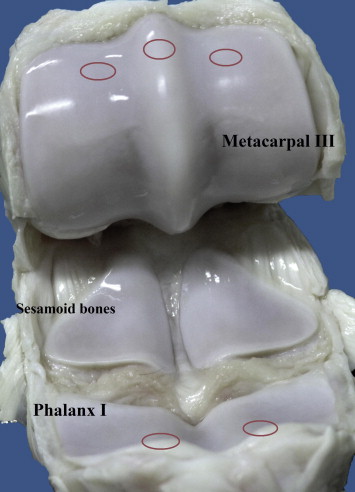Arthroscopy enables direct inspection of the articular surface, but provides no information on deeper cartilage layers. Optical coherence tomography (OCT), based on measurement of reflection and backscattering of light, is a diagnostic technique used in cardiovascular surgery and ophthalmology. It provides cross-sectional images at resolutions comparable to that of low-power microscopy. The aim of this study was to determine if OCT is feasible for advanced clinical assessment of lesions in equine articular cartilage during diagnostic arthroscopy.
Diagnostic arthroscopy of 36 metacarpophalangeal joints was carried out ex vivo. Of these, 18 joints with varying degrees of cartilage damage were selected, wherein OCT arthroscopy was conducted using an OCT catheter (diameter 0.9 mm) inserted through standard instrument portals. Five sites of interest, occasionally supplemented with other locations where defects were encountered, were arthroscopically graded according to the International Cartilage Repair Society (ICRS) classification system. The same sites were evaluated qualitatively (ICRS classification and morphological description of the lesions) and quantitatively (measurement of cartilage thickness) on OCT images.
OCT provided high resolution images of cartilage enabling determination of cartilage thickness. Comparing ICRS grades determined by both arthroscopy and OCT revealed poor agreement. Furthermore, OCT visualised a spectrum of lesions, including cavitation, fibrillation, superficial and deep clefts, erosion, ulceration and fragmentation. In addition, with OCT the arthroscopically inaccessible area between the dorsal MC3 and P1 was reachable in some cases. Arthroscopically-guided OCT provided more detailed and quantitative information on the morphology of articular cartilage lesions than conventional arthroscopy. OCT could therefore improve the diagnostic value of arthroscopy in equine orthopaedic surgery.
